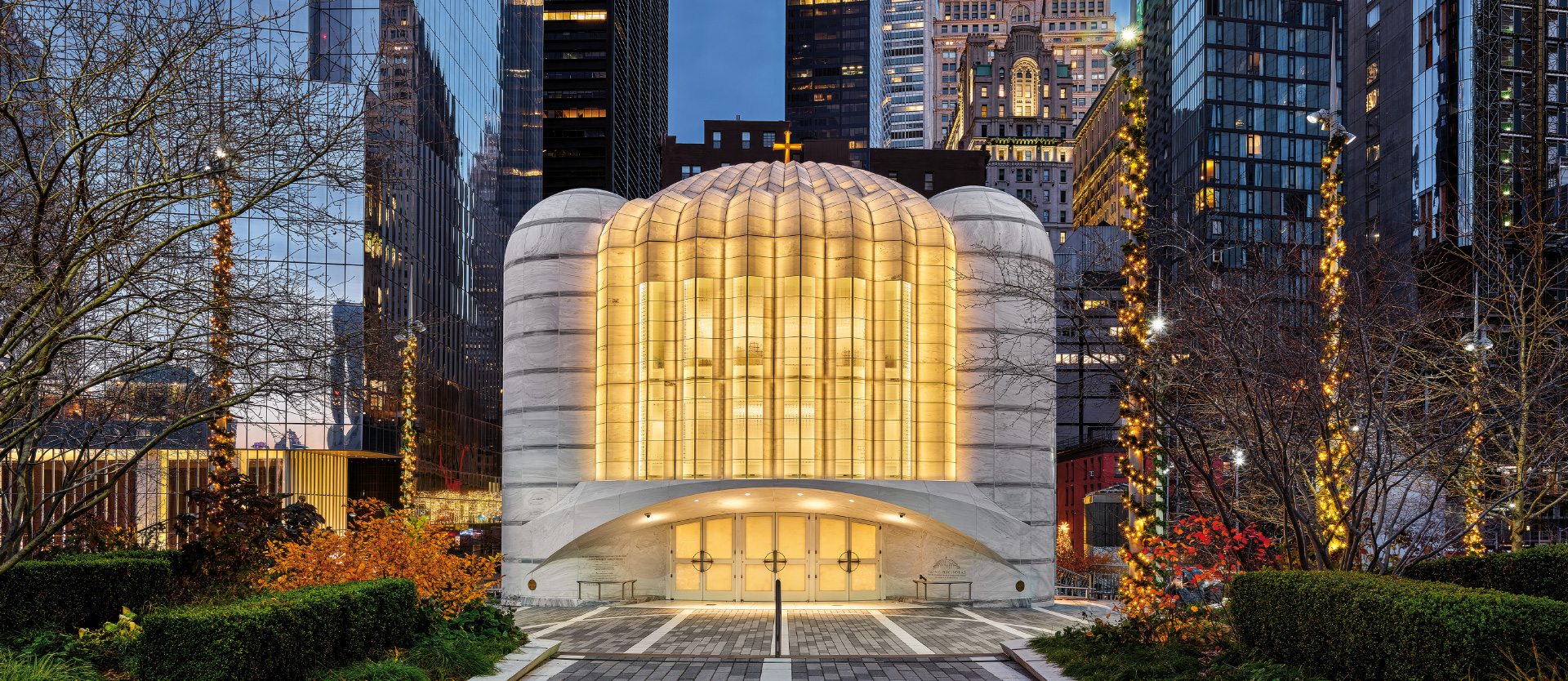
Architecture in the spotlight

Seeing and light are inextricably linked. The mystery of seeing and perception has preoccupied philosophers and scientists for thousands of years. Architects of all cultures have always tried to incorporate light into their planning and design. As soon as artificial light was invented, important buildings began to be highlighted from the nightly gray of cities through targeted lighting. The great world exhibitions of the 19th century were the experimental field of modern architectural illumination: in Paris in 1889, for example, the newly erected Eiffel Tower became a "lighthouse" at night. From the 1920s onwards, the illumination of facades at night became an integral part of architects' planning. They were looking for avant-garde, technical and aesthetic solutions for the big cities.

The UAE pavilion at Dubai Expo 2020. © Palladium Photodesign/Oliver Schuh + Barbara Burg
Today, we speak of "architainment" when a lighting concept is particularly sophisticated. This usually involves lighting installations that set the scene for buildings and set them visually apart from their surroundings. "Electric light has fundamentally changed architecture - much more so than steel, glass and concrete. This is where the real modernity lies," the American architect Douglas Haskell once put it in a nutshell.
Architecture thrives on light. Santiago Calatrava is one of those who perfectly orchestrates the interplay of light and form. He has made a name for himself worldwide with his imaginative architecture. From the Olympic sports complex in Athens in 2004 to the World Trade Center Transportation Hub in Manhattan, he demonstrates a sensitive feel for the interplay of aesthetics, structure, incidence of light and lighting. Calatrava draws his inspiration from a wide variety of sources: Auguste Rodin's approach to sculpture and architecture as well as the principles of classicism and Greek Cycladic art. He is also fascinated by nature, his mother and teacher, and by NASA space design. Calatrava's works are both aerodynamic and organic.

Pedestrian & Bicycle Bridge Calgary, Canada. Known as the Peace Bridge. © Alan Karchmer/OTTO
But one thing is particularly striking when you pick up Calatrava's latest exhibition in the form of an opulent illustrated book published by TASCHEN: Many of his buildings appear light, sometimes even mysterious, when they are brought into focus by the evening artificial lighting.
The Greek Orthodox Church of St. Nicholas in New York shines between mighty skyscrapers. The translucent building literally glows divinely from within. The Peace Bridge in Calgary, Canada, is also impressive in the late hours. The artificial light emphasizes the unusual shape, which is not so striking during the day. The pavilion of the United Arab Emirates at EXPO 2020 in Dubai is also a masterpiece. In the early evening, it shines in soft pastel shades that are very reminiscent of the unique lighting moods in desert regions.
Originalpublikation:
Calatrava. Complete Works 1979–Today
TASCHEN Verlag, Köln
ISBN 978-3-8365-8709-9
200.- Euro












